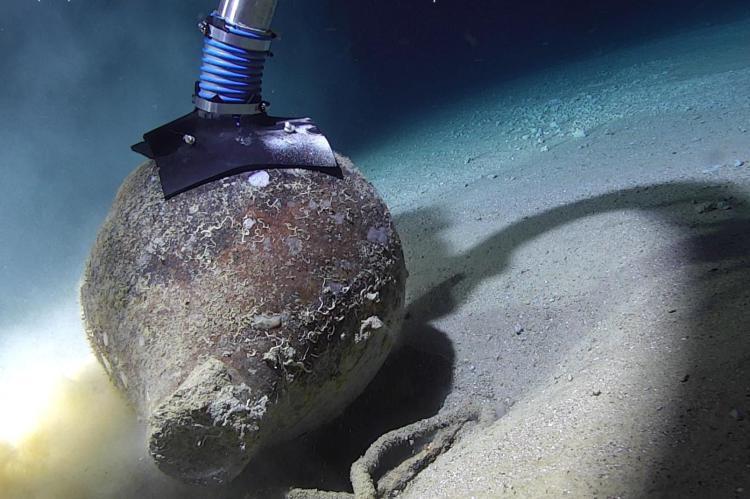Trans Adriatic Pipeline Teams Recovered 2600-Year-Old Artefacts 800 Meters Below Sea Level

Trans Adriatic Pipeline (TAP) team of experts recovered 22 important archeological objects from approximately 800 meters below sea level.
The extraordinary artifacts were recovered in the Otranto canal of the Adriatic Sea, close to the pipeline’s offshore route, on November 17, 2021, as reported in an article published on the TAP website.
The artifacts included many ancient jars: four hydriai, three amphorae, four trefoil jugs, one pithos, a set of cups, and olive seeds believed to belong to a few Greek-archaic shipwrecks so far identified in Mediterranean waters and the first identified in the Adriatic Sea.
According to the preliminary analysis, the artifacts can be traced back to the second half of the 7th century BC, providing more insight into the first millennium’s trans-Atlantic trade.
The findings have been delivered to the National Superintendency of Underwater Cultural Heritage, with which TAP cooperates for further investigations, studies, and restoration of the recovered artifacts.
TAP teams identified high archeological interest ceramic elements dispersed at the seafloor, about 780 meters below sea level, during a regular survey along the 105km offshore corridor.
The team presented the findings to the local Superintendency for Cultural Heritage, Fine Arts, and Landscape, who agreed to investigate the area of interest further and recover some of the important archeological pieces.
Following the approach agreed upon by the Superintendency, TAP implemented continuous archeological monitoring during the pipe-laying activities in 2020 to evaluate activities in advance and avoid any potential interference with important archeological sites.
The team used a remotely operated vehicle to precisely monitor the pipe laying process in real-time. The “guided-laying” procedure ensured the pipeline was laid within its corridor (+/-5 meters) along the planned routes already cleared of any archeological find.

